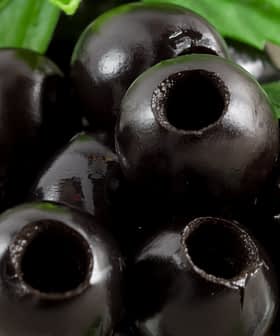Producers in California Expect a Return to Normal Yields This Season
The California Olive Oil Council estimates that olive oil production will reach about 4.0 million gallons this year, a 135 percent increase compared with last year's dismal harvest.
 Photo courtesy of Phil Asquith.
Photo courtesy of Phil Asquith.Producers and officials across California are expecting a return to normalcy this year after a series of unusual weather events led to a large production decrease in the 2018/19 crop year.
“My estimate for this year will likely be close to 4.0 million gallons [around 13,800 tons],” Patricia Darragh, the executive director of the California Olive Oil Council (COOC), told Olive Oil Times. “In 2018, production was way down due to weather issues in the first quarter. Last year we had about 1.6 to 1.8 million gallons produced. A significant decrease.”
We are feeling good about this year’s harvest. Last year was a historically bad harvest for all of California and we feel we are returning to more traditional volumes.
Last year, a series of unusual weather events including an early bloom and late frost led to a 57 percent decrease in olive oil production, which was far lower than had been originally anticipated. Many farmers lost most or all of their olive crops and several producers had no oil to sell to their usual clients.
“Last year was very difficult with many of our groves experiencing poor production,” Cliff Little, the president of Corto Olive, told Olive Oil Times. “In some cases the crop was so poor that we didn’t even harvest. I don’t expect that to be the case this year.”
See Also:2019 Harvest NewsLittle added that he had been expecting a very big year in terms of production, but spring rains slightly dampened these prospects.
“I don’t think it will be the best crop year that we have seen in California, in regards to volume,” he said. “However, we expect significant increases over last year.”
Corto Olive are not the only ones expecting a big rebound in production this year. At California Olive Ranch, the largest olive oil producer in the state, new CEO Michael Fox told Olive Oil Times that he expected a return to normalcy.
“We are feeling good about this year’s harvest,” he said. “Last year was a historically bad harvest for all of California and we feel we are returning to more traditional volumes.”
While the COOC and producers will ultimately have to wait until the beginning of the harvest in October and November to see how accurate their predictions are, producers from across the state are hoping to recoup some financial losses incurred by last season’s poor harvest.
“Last year we had almost nothing, but managed to squeeze out enough oil to keep us going,” Richard Meisler, the co-owner of San Miguel Olive Farm, told Olive Oil Times. “This year production will be plentiful. We will be in a great position and could very well make up the loss.”
Little is also confident that this year’s harvest will help make up for last year, in which Corto Olive could not meet their customers’ full demand for olive oil and had to put all of them on allocation.
“We are hopeful that increases in production this year will help to offset some of the financial hardship our groves felt from last year,” he said. “[We] are confident that we will have enough oil to meet our markets demand moving forward.”
All of the producers interviewed for this story by Olive Oil Times said that they were anticipating good quality from their oils this year, as they do almost every year.
The challenge for the whole California olive oil sector moving forward will be ensuring sufficient production. Producers in the state learned a long time ago how to manage the natural on and off-years experienced by olive trees, but will now need to adapt to a more turbulent climate as well.
Phil Asquith, the owner of Ojai Olive Oil, told Olive Oil Times that he suffered a significant production decrease from his own olive groves last year, but was able to buy enough olives in order to keep his production stable.
“Our production is the same every year, as we specifically target to purchase enough olives beyond our own to get to exactly what we need,” he said.
As a result of this strategy, Asquith said that he does not need earnings from this year’s harvest to makeup for the previous one.
“It doesn’t really work that way for us, but this year will certainly be better than last year, and better for growers,” he said. “That being said, people are used to the cyclical nature of the harvests, and to the swings being especially large these days, so nothing is unexpected.”








